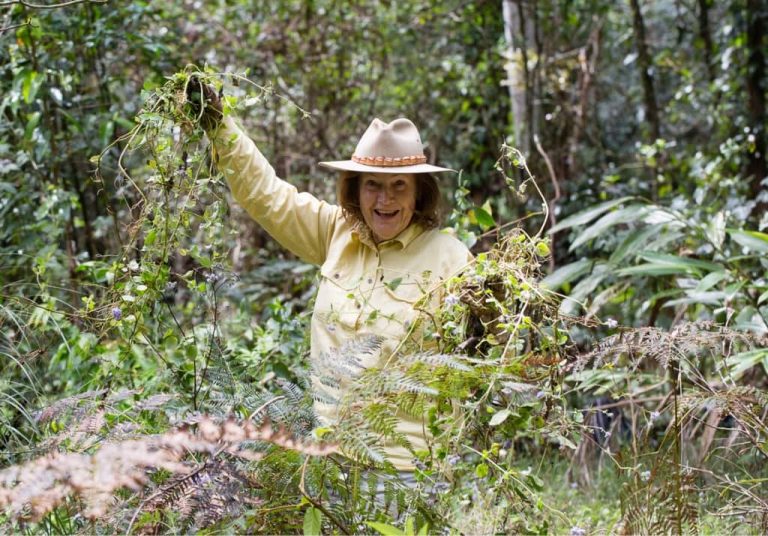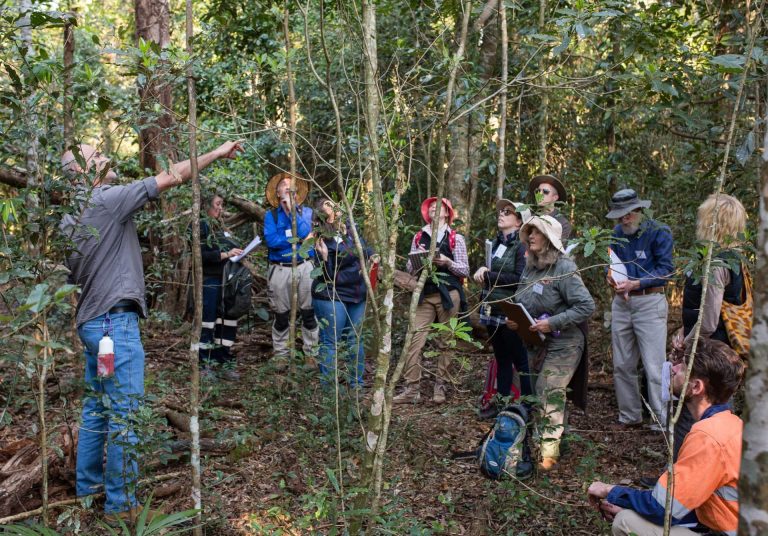Photo Christine Bull
We are strategic with where we work to concentrate our efforts on wildlife corridors that link major nature hubs such as national parks, reserves and other protected areas.
Due to development and land clearing over the years, many major nature hubs have become isolated and fragmented. This has left “island like” parcels of native vegetation, separated from other “islands” by cleared open land.
Although major nature hubs provide a vital safe place for conserving native plants and animals, they alone, even large national parks, cannot by themselves protect all native plants and animals.
Many wildlife species need to move over large landscapes to different habitats at different times of the year to provide food and shelter.
Some species, like gliders, need a large habitat with many tree hollows so they can keep changing tree hollows to avoid predators.
Some species, such as the Wompoo Fruit-Doves, will avoid moving across cleared land, hence will become isolated in nature refuge “islands”.
This has a flow-on effect to the natural dispersal of seed and natural regeneration of landscapes. Many of the rainforest birds which eat large native rainforest fruits will not fly across large cleared open landscapes hence these species of plants do not easily naturally regenerate in areas beyond the “islands”.
Different trees fruit in different localities and in different seasons. The Wompoos move to many sites throughout the year to find ripe fruit. However, because of the risk of predators and their need for frequent snacks, they tend to avoid flying over cleared paddocks. This means that they never reach some forest blocks that are isolated by past clearing.
Wompoos are vital in spreading the seeds of the rainforest fruits they eat. The seeds pass unharmed through the fruit-dove gut and are deposited (often in a neat pile of pigeon manure) on the forest floor, ready to germinate. If Wompoos avoid an isolated bush block because of surrounding clearing, then that bush will be cut off from receiving seeds only eaten by Wompoos, and the plant diversity will decline.
This is just one example of the myriad connections between different species which maintain healthy ecosystems.
That leaves 90% of Australia’s landscape managed by private landholders.
Private landholders have a very significant contribution to make towards protecting and conserving nature, especially when it comes to providing linking corridors between national parks and reserves.
As a private landholder, it can be overwhelming to carry out conservation work without support.
Hinterland Bush Links formed to help support local landholders with conservation work and ultimately enhance connectivity in the landscape.
How we help is by securing funding to bring volunteers together, remove weeds, plant trees and run educational events. Our help is practical and we work at a local ground-level.

